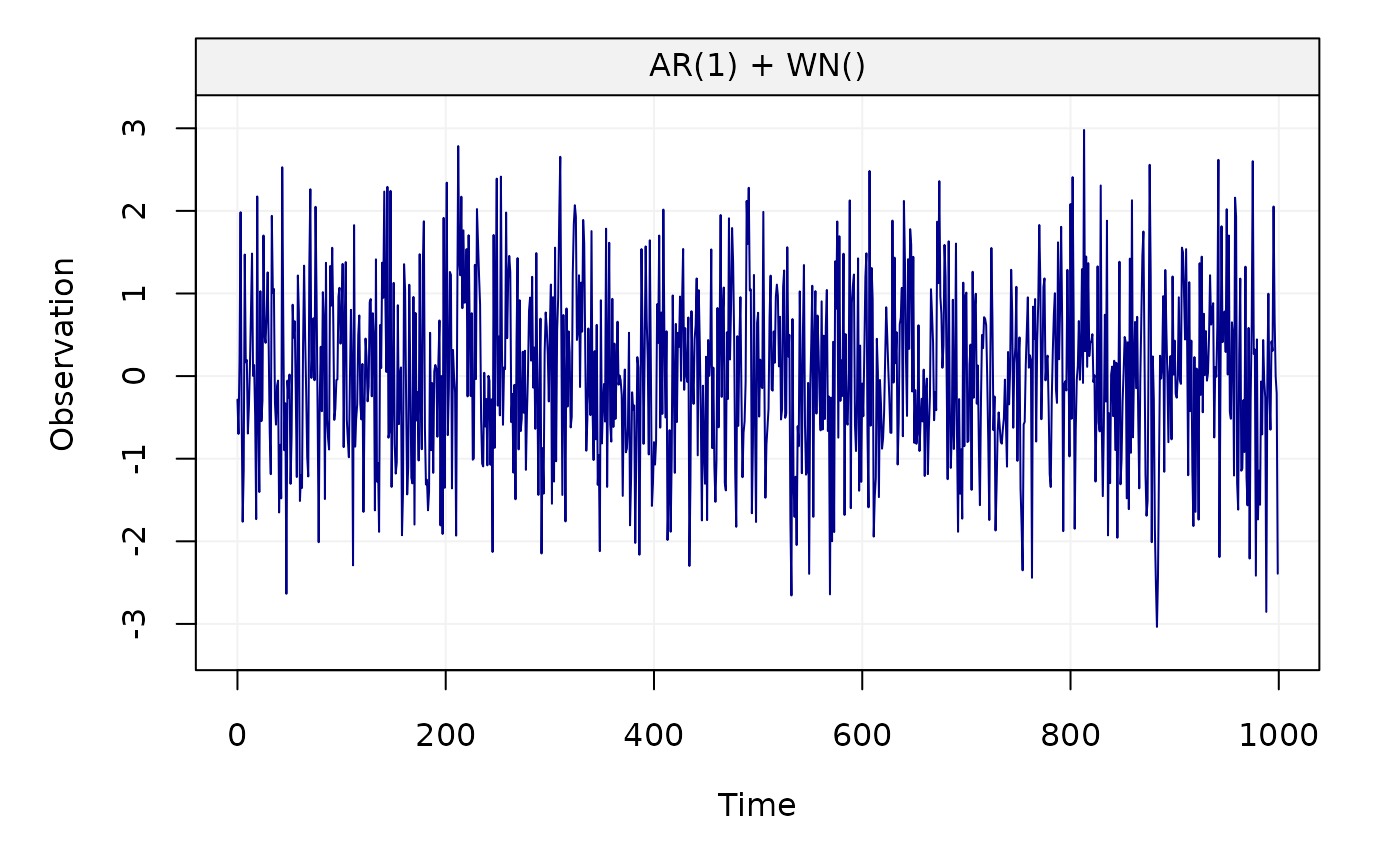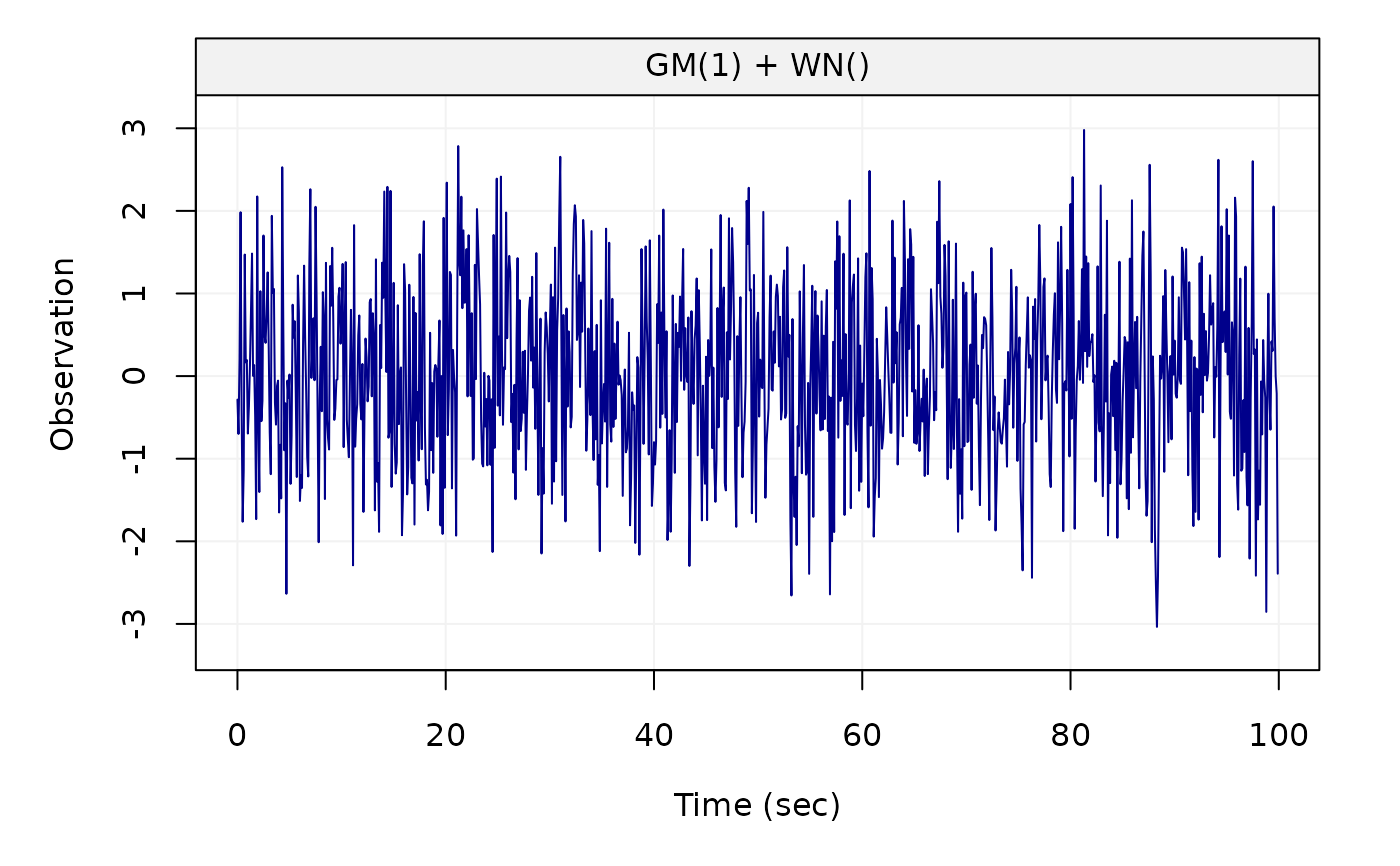Create a gts object based on a time series model.
gen_gts(
n,
model,
start = 0,
end = NULL,
freq = 1,
unit_ts = NULL,
unit_time = NULL,
name_ts = NULL,
name_time = NULL
)Arguments
- n
An
integercontaining the length of the time series.- model
A
ts.modelorsimtsobject containing the available models in the simts package.- start
A
numericthat provides the time of the first observation.- end
A
numericthat provides the time of the last observation.- freq
A
numericthat provides the rate of samples. Default value is 1.- unit_ts
A
stringthat contains the unit expression of the time series. Default value isNULL.- unit_time
A
stringthat contains the unit expression of the time. Default value isNULL.- name_ts
A
stringthat provides an identifier for the time series data. Default value isNULL.- name_time
A
stringthat provides an identifier for the time. Default value isNULL.
Value
A gts object
Details
This function accepts either a ts.model object (e.g. AR1(phi = .3, sigma2 =1) + WN(sigma2 = 1)) or a simts object.
Examples
# Set seed for reproducibility
set.seed(1336)
n = 1000
# AR1 + WN
model = AR1(phi = .5, sigma2 = .1) + WN(sigma2=1)
x = gen_gts(n, model)
plot(x)
 # Reset seed
set.seed(1336)
# GM + WN
# Convert from AR1 to GM values
m = ar1_to_gm(c(.5,.1),10)
# Beta = 6.9314718, Sigma2_gm = 0.1333333
model = GM(beta = m[1], sigma2_gm = m[2]) + WN(sigma2=1)
x2 = gen_gts(n, model, freq = 10, unit_time = 'sec')
plot(x2)
# Reset seed
set.seed(1336)
# GM + WN
# Convert from AR1 to GM values
m = ar1_to_gm(c(.5,.1),10)
# Beta = 6.9314718, Sigma2_gm = 0.1333333
model = GM(beta = m[1], sigma2_gm = m[2]) + WN(sigma2=1)
x2 = gen_gts(n, model, freq = 10, unit_time = 'sec')
plot(x2)
 # Same time series
all.equal(x, x2, check.attributes = FALSE)
#> [1] TRUE
# Same time series
all.equal(x, x2, check.attributes = FALSE)
#> [1] TRUE